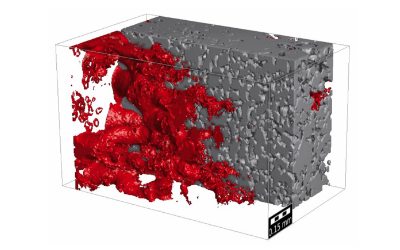Abstract
Modelling of reactive flow in digital rocks requires the combination of geochemistry and Digital Rock Physics. The modelling assumes that the examined samples are representative for the properties of interest, which evolve during the 4D simulations. With the prerequisite of high image resolutions and large sample volumes, representative elementary volumes (REV) require numerically challenging domain sizes with billions of voxels and larger.
Our approach is to simulate digital reactive flow experiments using the GeoDict software package (Math2Market GmbH), as a combination of efficient flow solvers and transport simulations, and either geochemical equilibrium reactions or kinetically controlled calcite reactions based on individual aqueous solutions. The coupled geochemical solver PhreeqC (USGS) enables pore-scale studies in sub-samples of digital reservoir rocks at REV-size.
Subsequently, our efficient approach to simulate reactive transport in entire REV domains is based on the Lagrangian transport method. Mineral-related reaction rates are applied according to the results obtained in sub-samples. The dynamic processing of particle-rock interactions allows the high performance required to handle large domains.
We emphasize the feasibility of our approach by showing reactive flow simulation results for a carbonate sample from the Grosmont formation (Alberta, Canada) published in a DRP benchmark study (Andrä et al., 2013).
